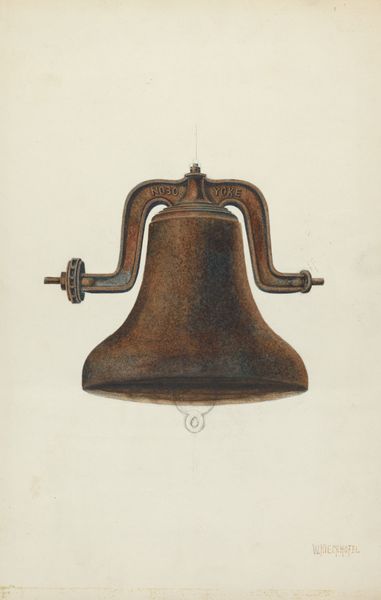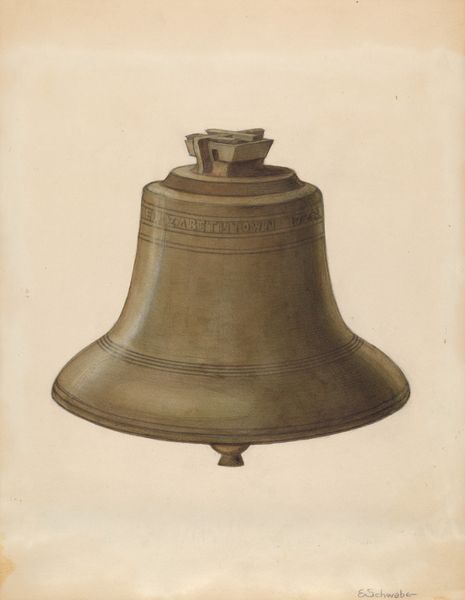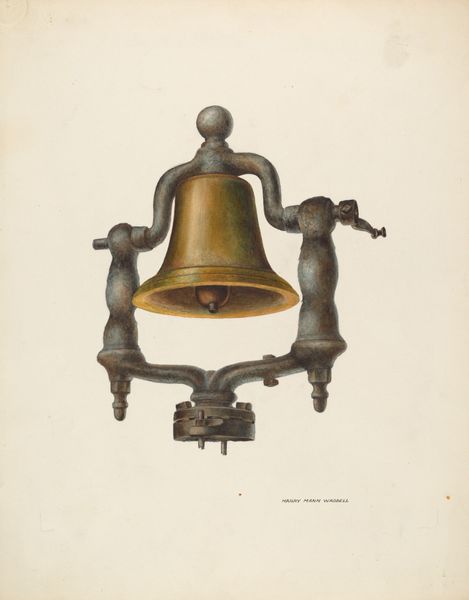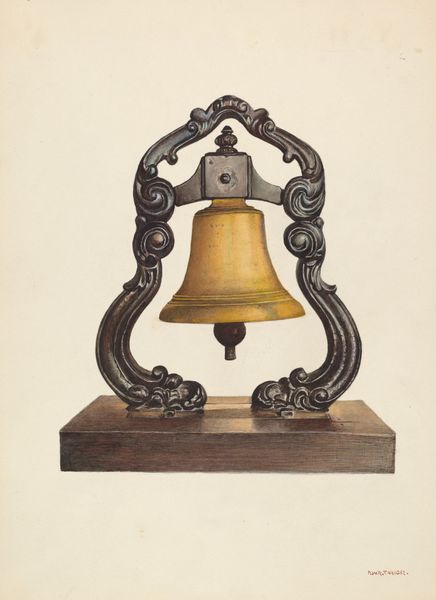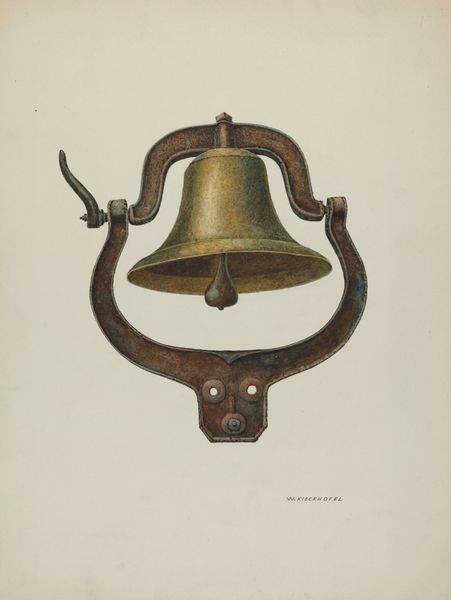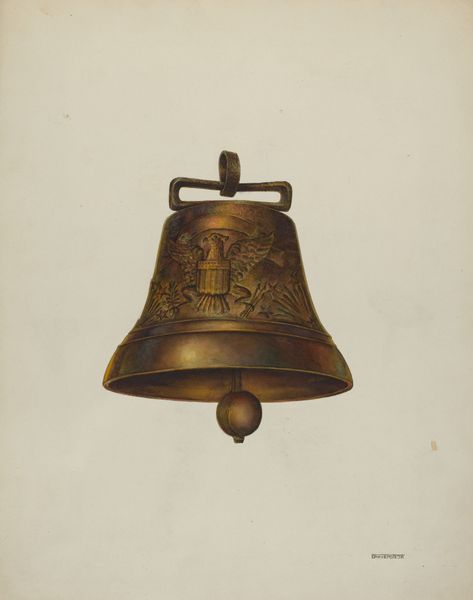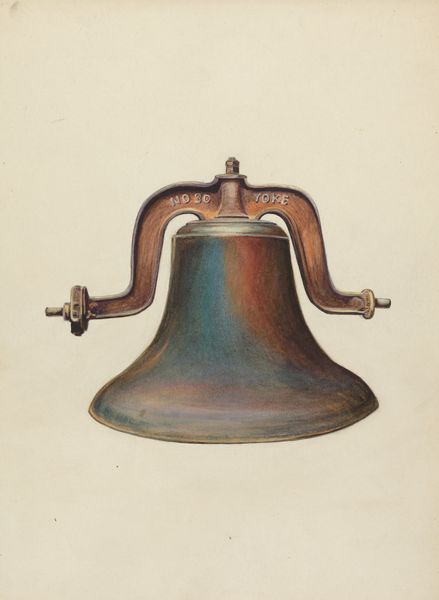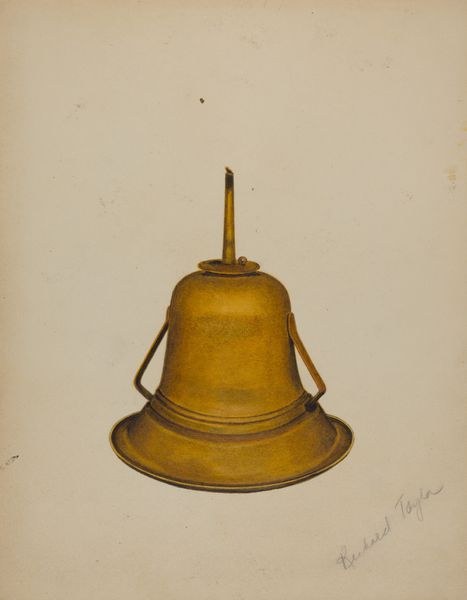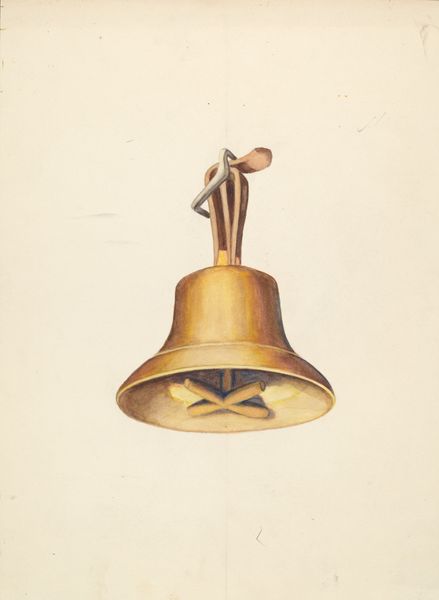
drawing, coloured-pencil, watercolor
#
drawing
#
coloured-pencil
#
caricature
#
watercolor
#
coloured pencil
#
realism
Dimensions: overall: 33.2 x 24.3 cm (13 1/16 x 9 9/16 in.)
Copyright: National Gallery of Art: CC0 1.0
Curator: Well, hello there. Georgina King created this watercolor and colored-pencil drawing called "Locomotive Bell" sometime between 1935 and 1942. What do you make of it? Editor: My initial reaction is a feeling of subdued monumentality. It's just a bell, but it's presented with such gravity. I'm immediately thinking about industrialization and the promise, or perhaps the broken promise, of progress. Curator: Oh, I love that, the broken promise! It's got a melancholic sheen, hasn't it? And you’re right; for something so still, there's this latent energy, the ghost of its clangor trapped inside, almost as if she has drawn the sonic. Do you feel it's trying to recall its purpose? Editor: Absolutely, but also potentially lamenting it. Think about the labor and resources extracted to create both the bell and the locomotives they adorned. I see a visual representation of capitalism's insatiable appetite and its impact on both human lives and the environment. Curator: True, you have that tension embedded, haven’t you, like a machine age haiku. And on another note, I'm intrigued by King's rendering of the metal. The contrast between the golden brass and the duller grays is really captivating, but subtle as though dulled and dimmed through time. It reminds me a bit about Dutch still life… with more clang! Editor: The treatment of color is interesting, signaling the complexity of labor conditions in factories during that era. She shows us the cost through materiality, both for those who crafted the object and perhaps society in general at that point in history. Curator: Indeed, that element feels very loaded to me. She brings so much history and quiet resonance. But more importantly it begs the questions what else echoes quietly in the everyday that is just waiting to clang if we pay attention. Editor: Right, this bell serves as a symbol and the question is how well is that symbolism acknowledged now, given it is a direct material object of capitalist endeavors. It's a poignant reminder to consider where things come from and who pays the price.
Comments
No comments
Be the first to comment and join the conversation on the ultimate creative platform.
